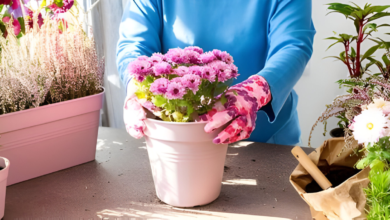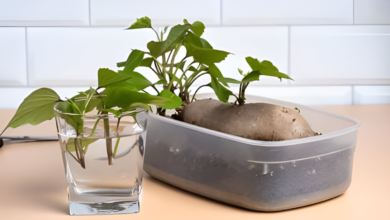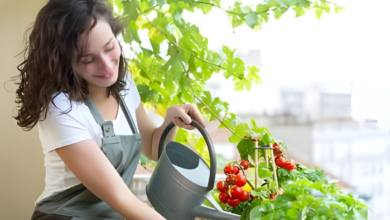Easy Flower Pot Drawing: Simple Steps for Beautiful Art

Introduction
Flower pot drawing is a wonderful artistic pursuit that allows you to unleash your creativity and bring beauty into the world. Whether you are a beginner or an experienced artist, this blog post will guide you through the process of creating stunning flower pot drawings. In this comprehensive guide, we will cover everything from the materials and tools you need to the step-by-step techniques for drawing a basic flower pot. So grab your sketchbook and let’s get started on this artistic adventure!
Why Flower Pot Drawing is a Great Artistic Pursuit
Flower pot drawing offers a unique way to express your love for nature and plants. By depicting flower pots in your artwork, you can capture the essence of a garden and the beauty of blooming flowers. Drawing flower pots also allows you to experiment with different shapes, sizes, and designs, giving you the opportunity to explore your artistic style and creativity. In addition, flower pot drawing can be a soothing and relaxing activity, providing a sense of peace and tranquility as you create.
Materials and Tools Needed for Flower Pot Drawing
Before you embark on your flower pot drawing journey, it’s important to gather the necessary materials and tools. Here are the essentials you’ll need:
- Sketchbook or paper: Choose a high-quality sketchbook or paper that is suitable for the medium you plan to use, such as pencil, colored pencils, or markers.
- Pencils: Invest in a set of drawing pencils with a range of hardness, from 2H for light sketching to 6B for darker shading.
- Erasers: Have both a kneaded eraser and a standard eraser on hand for correcting mistakes and creating different effects.
- Sharpener: Keep a reliable pencil sharpener nearby to maintain the sharpness of your pencils.
- Ruler: A ruler will come in handy for drawing straight lines and creating precise proportions.
- Reference images: Gather a collection of reference images of flower pots to inspire and guide your drawing.
Basic Tips and Techniques to Get Started
Before diving into drawing a specific flower pot, it’s important to understand the structure of a flower pot and familiarize yourself with basic drawing techniques. Here are some tips to get you started:
The Anatomy of a Flower Pot: Exploring the Different Parts
To accurately depict a flower pot, it’s essential to understand its anatomy. Here are the main parts of a flower pot:
- The base or bottom of the pot: This is the flat surface that provides stability and holds the pot above the ground.
- The body or main structure of the pot: This is the central part of the pot that holds the soil and plants.
- The Rim or Lip of the Pot: This is the upper edge of the pot that adds visual interest and serves as a boundary for the soil and plants.
Various Shapes and Sizes: Choosing the Perfect Flower Pot Design
When drawing a flower pot, you have the freedom to choose from a variety of shapes and sizes. Here are some considerations to keep in mind:
- Common Shapes of Flower Pots: Flower pots come in various shapes, such as round, square, rectangular, and cylindrical. Experiment with different shapes to find the one that suits your artistic vision.
- Considerations for Choosing the Right Size: Think about the scale and proportions of your drawing. A small flower pot may work well for a delicate composition, while a larger pot can add drama and impact.
- Exploring Unique and Creative Designs: Don’t be afraid to think outside the box and experiment with unconventional flower pot designs. Incorporate patterns, textures, or even sculptural elements to make your drawing stand out.
Step-by-Step Guide to Drawing a Basic Flower Pot
Now that you have a strong foundation in flower pot anatomy and design, let’s dive into the step-by-step process of drawing a basic flower pot:
Sketching the Outline: Creating the Foundation
- Establishing the Height and Width of the Pot: Use your ruler to determine the desired height and width of your flower pot. Sketch light, using basic guidelines to guide your drawing.
- Drawing the Basic Shape of the Pot: Using your guidelines as a reference, lightly sketch the outline of the pot. Start with the body and then proceed to add the rim, base, and any additional details.
- Adding details such as the rim and base: Pay attention to the curves, angles, and proportions of the pot. Add the rim and base, ensuring they are consistent with the overall design.
Adding Dimension and Depth: Shading Techniques
To make your flower pot drawing come to life, you need to add dimension and depth through shading techniques. Here are some tips for shading your flower pot:
- Understanding Light Source and Shadow Placement: Determine the direction of the light source and visualize where the shadows would fall on the pot. Use light, feathery strokes to indicate these areas.
- Using Value and Contrast for Realistic Effects: Gradually build up the shading by using different pencil hardnesses to create varying values and contrasts. This will give your drawing a three-dimensional appearance.
- Blending and Smudging Techniques for Smooth Shading: Use a blending stump, tortillon, or even your finger to blend and smudge the shading for a seamless and realistic look. Experiment with different techniques to achieve the desired effect.
Bringing Your Flower Pot to Life: Adding Beautiful Details
Now that the foundation and shading are complete, it’s time to add intricate details to your flower pot drawing. Here are some techniques to enhance your drawing:
- Creating intricate patterns and designs: Use fine-tipped pens or colored pencils to add decorative patterns or designs to the surface of the pot. Let your imagination run wild and create unique and visually appealing details.
- Adding texture to the pot surface: Experiment with different shading techniques, such as cross-hatching or stippling, to create the illusion of texture on the pot’s surface. This will add depth and interest to your drawing.
- Enhancing the Drawing with Coloring Techniques: If desired, bring in colors to enhance your flower pot drawing. Use colored pencils, markers, or even watercolors to add vibrancy and make your pot come alive with color.
Exploring Advanced Flower Pot Drawing Techniques
Once you have mastered the basics of drawing a flower pot, it’s time to explore advanced techniques to take your artwork to the next level. Here are some ideas to consider:
Incorporating Plants and Flowers: Adding Natural Elements
To create a complete composition, consider incorporating plants and flowers into your flower pot drawing. Here are some tips for drawing various natural elements:
- Drawing Various Types of Flowers: Research and practice drawing different types of flowers to add variety and beauty to your drawing. Pay attention to the unique shapes, textures, and petal arrangements of each flower.
- Depicting Plants and Greenery Inside the Pot: Experiment with drawing different types of plants and greenery inside the pot. Vary the sizes, shapes, and positioning of the foliage to create an interesting and visually appealing composition.
- Combining Different Elements for a Lush Composition: Mix and match flowers, plants, and greenery to create a rich and lush composition. Explore different combinations to find the perfect balance between elements.
Experimenting with Different Art Styles: Adding Personal Touches
To add your personal touch and artistic style to your flower pot drawings, consider experimenting with different art styles. Here are some styles to explore:
- Trying Realism, Impressionism, or Surrealism: Experiment with realistic, impressionistic, or surrealistic approaches to your flower pot drawing. Each style will lend a unique mood and atmosphere to your artwork.
- Exploring Minimalism or Abstract Approaches: Simplify your flower pot drawing by embracing minimalism or abstract approaches. Focus on essential lines, shapes, and colors to create a visually striking and thought-provoking composition.
- Combining Styles for Unique and Captivating Results: Don’t limit yourself to a single art style. Feel free to combine different styles and techniques to create a truly unique and captivating flower pot drawing.
Using Mixed Media: Expanding Your Artistic Horizons
If you’re feeling adventurous and want to push the boundaries of traditional drawing, try incorporating mixed-media techniques into your flower pot drawings. Here are some ideas to explore:
- Adding Depth with Colored Pencils or Markers: Use colored pencils or markers to add depth and vibrancy to your flower pot drawing. Layer different colors to create shadows, highlights, and texture.
- Incorporating watercolors for vibrant effects: Experiment with watercolors to create beautiful washes of color in your flower pot drawing. Blend and layer the watercolors to achieve a soft and dreamy effect.
- Experimenting with collage or mixed media techniques: Push your artistic boundaries by incorporating collage or mixed media techniques into your flower pot drawing. Cut out and glue different materials, such as papers or fabrics, to create an interesting and textured composition.
Summary and Frequently Asked Questions (FAQs)
Recap of the Steps for Easy Flower Pot Drawing
To summarize, here are the key steps for creating a beautiful flower pot drawing:
- Gather your materials and reference images.
- Understand the structure and design of flower pots.
- Sketch the outline and add dimension through shading techniques.
- Add intricate details and bring your flower pot to life with coloring techniques.
- Experiment with advanced techniques like incorporating plants, trying different styles, and using mixed media.
Common Challenges and Troubleshooting Tips
Drawing flower pots can come with its own set of challenges. Here are some troubleshooting tips for common issues:
- Can I use these techniques to draw objects besides flower pots? Absolutely! The techniques and principles discussed in this blog post can be applied to draw a wide range of objects. Feel free to adapt and experiment with different subjects.
- How can I improve my shading skills for more realistic drawings? Practice is key when it comes to improving shading skills. Take the time to study and observe how light interacts with different objects. Experiment with various techniques and pay attention to values and contrasts.
- Are there any online resources or tutorials to further enhance my flower pot drawing? Yes! There are many online resources, tutorials, and video demonstrations available that can provide additional guidance and inspiration for your flower pot drawing. Explore platforms like YouTube, art blogs, and online art communities to discover valuable resources.
So, are you ready to embark on your flower pot drawing journey? Grab your sketchbook, let your creativity flow, and enjoy the process of creating beautiful art. With practice and perseverance, you’ll be amazed at the stunning flower pot drawings you can create. Happy drawing!




